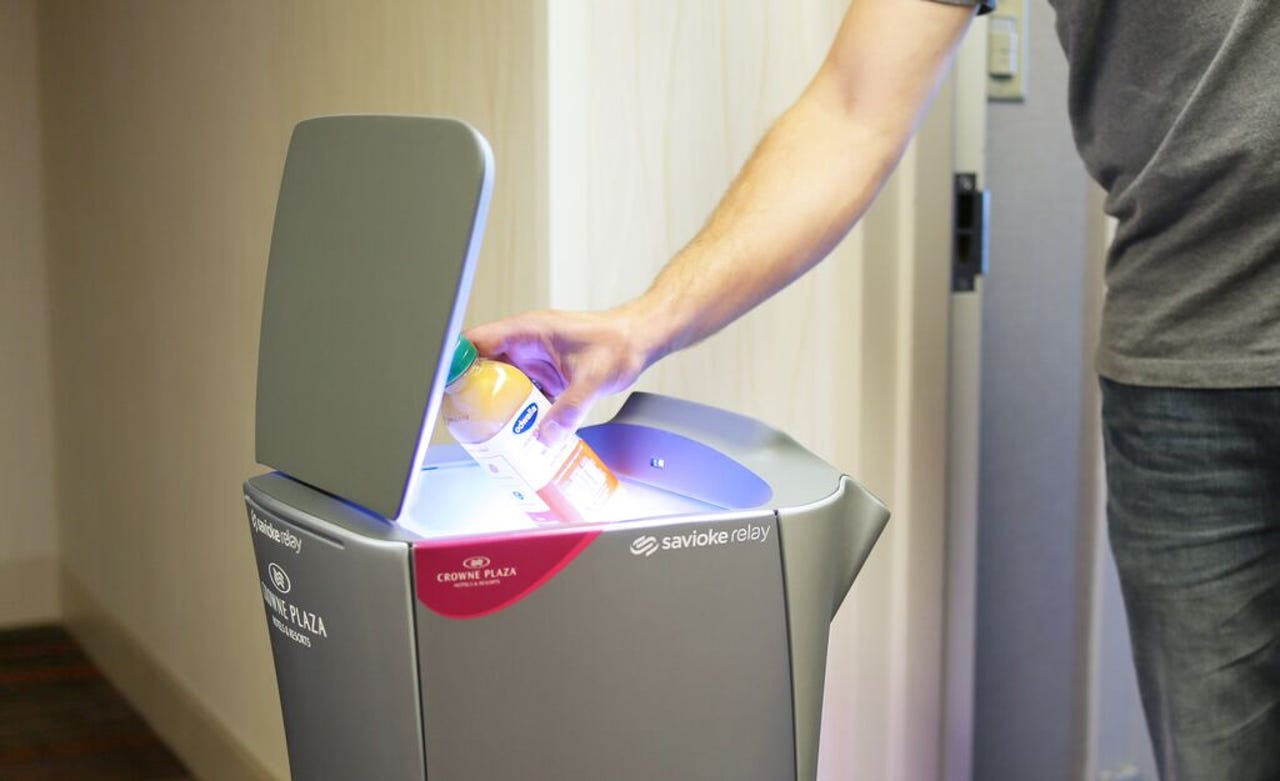Intel camera gives robots 3D vision

During his keynote address at the Intel Developer Forum a couple weeks ago, Intel chief executive Brian Krzanich got thirsty. There was a time, not long ago, when the job of handing the CEO a beverage might have fallen to the officious aide who, spotting his chance for a win, would dash across the stage like a ball boy at Wimbledon, a streak of khaki and cuffs thrusting a sweat-beaded bottle in his outstretched hand.
Krzanich got his drink, a Coke, but it was delivered by a servant robot built by California bot maker Savioke. Sorry would-be brown noser: You're the latest victim of the robot revolution.
The stunt was prelude to an announcement by Krzanich that promises to make robotics developers very happy. Savioke, the Sunnyvale-based company that makes robots for the hospitality industry (Read more about Savioke), has developed a wrapper for Intel's RealSense camera. Savioke's robots run on the open-source Robotic Operating System, and the company, like many promising startups in the space, is a devout believer in the open-source ethos, which seems destined to become the standard approach in robotics development in a way it never quite did in personal computing.
The wrapper will allow developers to make use of the RealSense Camera, which enables robots to sense rich three-dimensional environments. "Intel RealSense Cameras bring great low-cost depth sensing to robotics, in a platform that is widely available and easy to integrate using ROS," says Steve Cousins, CEO of Savioke.Until recently, bot makers looking to incorporate 3D sensing on the cheap have relied on a sensor made by Israeli company PrimeSense. But in late 2013 PrimeSense was acquired by Apple for $350M, an indication of just how much potential the Cupertino-based giant sees in 3D sensing technology.
Since the acquisition, robot developers have been eager for a flexible and cheap depth sensor. Intel, meanwhile, is making an aggressive move into the world of robotics, and the company was thrilled to offer ROS support for RealSense. (Read more about Intel's play for the robotics market.)
"This is a much-needed peripheral for the robotics industry and we are looking forward to seeing the implications of an advanced, low-cost camera on the global robotics community when this device becomes generally available," says Brian Gerkey, CEO of Open Source Robotics Foundation, which manages ROS.
Depth-sensing has long been a stumbling block for robotics developers. Laser, radar, and infrared sensors enable highly accurate depth sensing, but those sensors are too expensive for most applications.
Meanwhile, technological hurdles have kept low-cost camera-based depth sensors from becoming a reality until very recently (the gist of the problem: it's very difficult to line up two lenses with the precision necessary to render a useful 3D image). But a few companies have now cracked the code. In addition to Intel and PrimeSense, startup Stereolabs offers a promising and highly versatile sensor, the ZED, for less than $500. The ZED is gaining developer support and may give Intel's camera a run for its money. (Read more about Stereolabs and human vision for robots.)
A fleet of Savioke's Relay robots, all using Intel RealSense cameras, were on site during the Intel Developer Forum. Relay is a state-of-the-art robot designed for autonomous delivery of items between people. It hasn't quite replaced the trusty aide, but it's a pretty cool start. Relay's first application is in the hospitality industry, and it is already delivering items to guests at Starwood and InterContinental Group hotels.